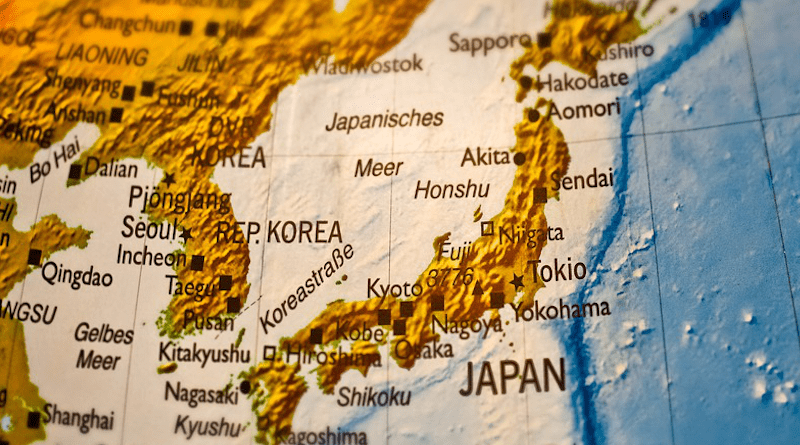Unification And Cultural Identity In East Asia – OpEd
Cold War-era ideological battles partitioned many a nation, but most united by the end of the 20th century. In East Asia, these divisions still persist, as evident in the diametrically opposed existence of the Democratic People’s Republic of Korea and Republic of Korea, and the People’s Republic of China and Republic of China. Yet while the former two still hold onto the common Korean identity, the latter pair seem to have diverged on the common Chinese identity. And this difference might be crucial in determining whether unification is possible for these two pairs.
In the post-Cold War era, Samuel Huntington proposed that instead of conflict over ideological differences, future wars will be fought over cultural faultlines. Increasingly, national identities are grappling with cultural forces which threaten to overwhelm civic elements. Countries lacking in adequate nation-building are being torn apart by competing ethnic groups. When even existing states are unable to hold themselves together, the question arises whether unification of others is possible and if so, on what basis.
Korea is still a homogenous cultural identity based on ethnonationalism, influenced by the rise of Korean nationalism in the 20th century in face of an occupying Japan. As the examples of Vietnam and Germany show, ideology can be easily overthrown in favour of bringing together who consider themselves as one. North and South Korea still consider themselves Koreans. This is because to them, a nation is based on ethnic and cultural uniformity (minjoksa) rather than any civic base. This idea has bled well into the decades after the partition. While North Korea refers to itself as Choson and South Korea refers to itself as Hanguk, both the names constitute the geographical expression covering the entire Korean peninsula. This has been the basis for various measures towards unification such as intra-Korean sports teams, even if these efforts were partly driven by the ambition and belief on either side that they will be the one to unify the peninsula.
On the other hand, Taiwan is creating a distinction between itself and mainland China. Taiwanese has become not only a political identity but also a cultural one. The country holds no (dis)illusion of one day taking over mainland China as it did under Chiang Kai-shek but prefers to be left alone. In 1991, about a quarter of Taiwanese considered themselves Chinese and about 50% considered themselves both Chinese and Taiwanese. By 2014, only 3% considered themselves exclusively Chinese and 33% consider themselves both Chinese and Taiwanese. The exclusive identification with a Taiwanese identity is more prominent amongst the youth. Within these twenty years, there was a 240% increase in people who identified exclusively as Taiwanese.
The creation of a Taiwanese identity has been propelled by the existence of an indigenous culture that was not fully erased after Chiang Kai-shek and his Chinese forces took over the island. It was easier to accommodate both sides after Taiwan’s democratization in 1987. While Chinese (as a cultural identity) and Taiwanese (as a political identity) need not be mutually exclusive, the ever-growing strife between China and Taiwan, the rise of chauvinistic Chinese nationalism in the mainland, and the coalescing of the various groups in Taiwan have led to growing bipolarity of the Chinese and Taiwanese identity. The latter has become more multicultural and civic rather than monoethnic in its scope.
There are other factors that also contribute towards the prospect of a Korean unification while counting out a Chinese one. The two Koreas are dependent on each other than the two Chinas are. The presence of nuclear weapons in North Korea compels South Korea to support the North’s economy and ensure its stability, producing mutually compatible stabilizing responses.
Nevertheless, the longer the two Koreas stay divided, the more diverging their national identities will be. Then the common cultural element will not override this difference as evident in the case of China and Taiwan. Even if governments strive for unification, younger South Koreans are not in favour of it. Similar to the situation in Taiwan, the younger generations that benefitted from the post-democratisation period of liberalism do not look upon unification favourably due to possible economic fallout that may emanate from it.
Like their counterparts in Taiwan, South Korean youth have experienced the fruits of liberalisation in a post-dictatorial era. This liberalisation has also been accompanied by a western understanding of nationhood with multi-cultural civic aspects overriding a monocultural one. North Koreans in South Korea feel excluded and there are nuanced differences in the Korean language and script used in both countries. Even after several decades, Vietnam and Germany have not fully reconciled over their divided past. But in these two countries, the responses from the younger population are optimistic regarding the fruits of unification. While older generations are divided over nation-building and viewing history, younger people ignore the cleavages and worry more about common issues such as the economy. If ever Korean unification is achieved, its durability will depend on the generations that will be born after it rather than the ones that might witness it.
*Aswathy Koonampilly is a postgraduate in International Relations from Christ University, Bangalore.

